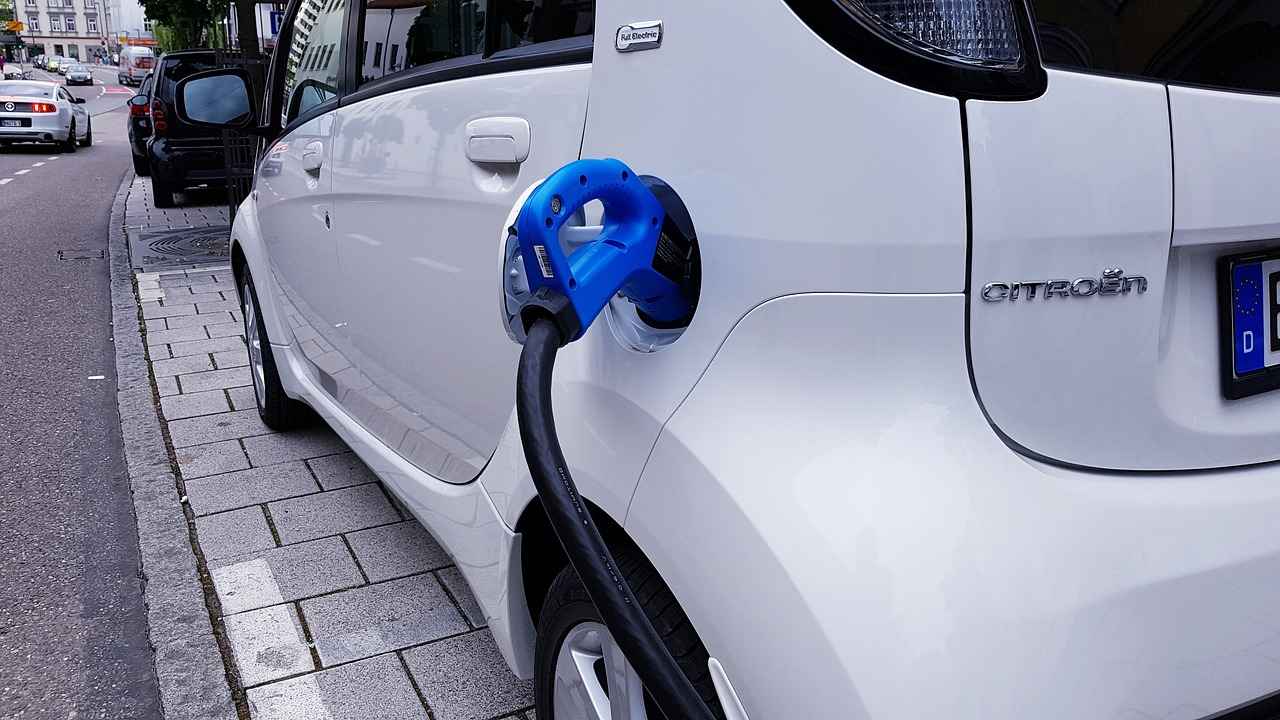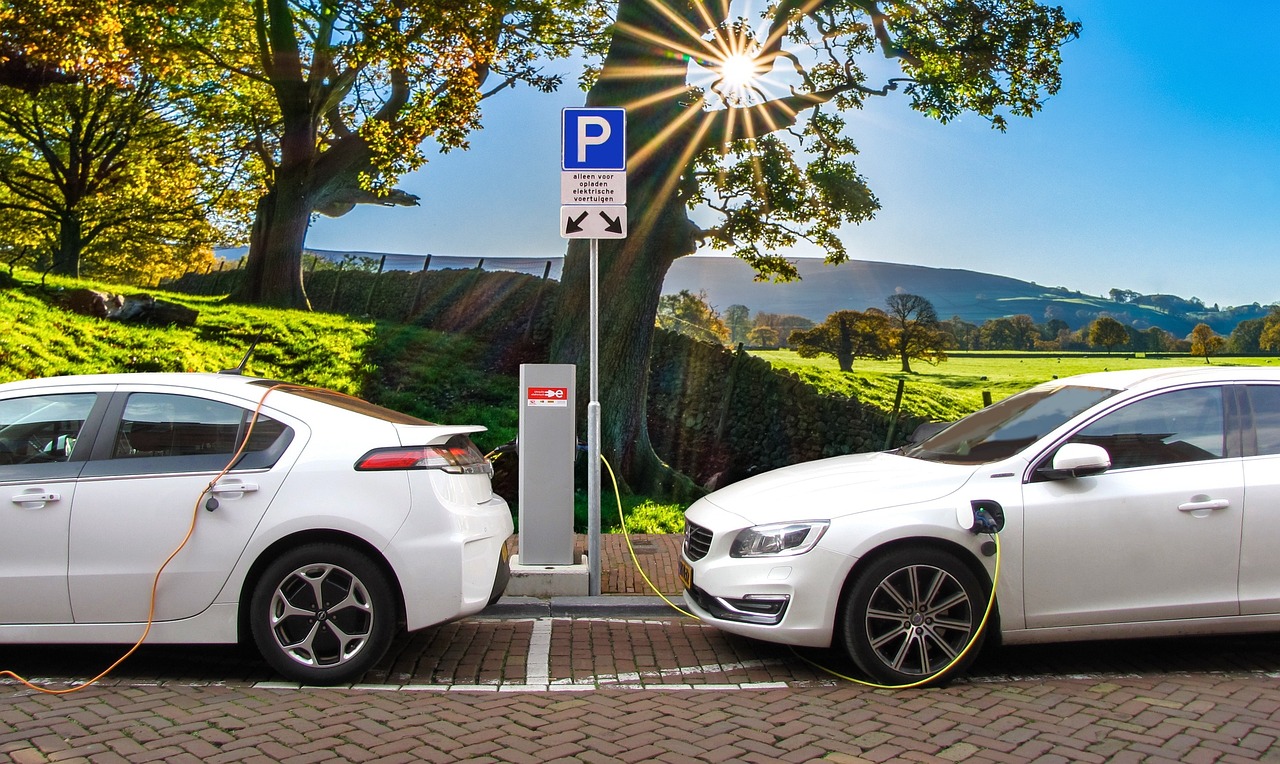This article delves into the exciting advancements and trends anticipated in the electric bike industry, focusing on technology, design, and market growth. As we look ahead to 2025 and beyond, riders can expect significant changes that will enhance their biking experience.
- The Rise of Smart Electric Bikes: The integration of smart technology will revolutionize electric biking. Features such as GPS tracking, fitness monitoring, and mobile app connectivity will provide riders with an interactive experience.
- Battery Technology Innovations: Expect breakthroughs in battery technology, leading to longer ranges, faster charging times, and improved energy efficiency. These advancements will greatly enhance rider convenience.
- Enhanced Design and Customization: Future electric bikes will prioritize aesthetics and functionality, with options for greater customization to meet individual rider preferences.
- Urban Mobility Trends: With increasing urban congestion, electric bikes will serve as an eco-friendly alternative to cars, promoting sustainable commuting.
- Regulatory Changes and Incentives: Government incentives, including subsidies and tax breaks, will encourage electric bike adoption, shaping the market positively.
- The Role of E-Bike Communities: Communities around electric biking will flourish, offering support and shared experiences, fostering a sense of belonging among riders.
- Future Market Predictions: Analysts predict substantial growth in the electric bike sector, driven by technological advancements and increasing consumer awareness of sustainability.
- Challenges Facing the Electric Bike Industry: Despite its potential, the industry must address challenges such as regulatory hurdles and competition from other transport modes.
In conclusion, the future of electric bikes is bright, with numerous advancements set to transform personal transportation. Riders can look forward to a more efficient, customizable, and enjoyable biking experience in the years to come.

1. The Rise of Smart Electric Bikes
The Rise of Smart Electric Bikes marks a significant shift in the cycling landscape, as technology increasingly integrates into our daily lives. Electric bikes, or e-bikes, are evolving beyond mere transportation; they are becoming smart mobility solutions that cater to the needs of modern riders.
With the advent of smart technology, electric bikes are now equipped with features that enhance user experience. One of the most notable advancements is GPS tracking, allowing riders to navigate effortlessly and track their routes. This feature not only aids in navigation but also enhances safety by enabling location sharing with friends or family.
Additionally, many e-bikes now come with fitness monitoring capabilities. Riders can track their performance metrics such as speed, distance, and calories burned, making it easier to set and achieve fitness goals. This integration encourages a healthier lifestyle and promotes cycling as an enjoyable form of exercise.
Furthermore, the connectivity with mobile apps is revolutionizing the way users interact with their bikes. Through these applications, riders can customize settings, access maintenance reminders, and even connect with other cyclists. This creates a more interactive experience, fostering a sense of community among riders.
In summary, the rise of smart electric bikes is transforming the cycling experience, making it more engaging and user-friendly. With features like GPS tracking, fitness monitoring, and mobile connectivity, riders can enjoy a seamless blend of technology and cycling, paving the way for future innovations in the industry.
| Feature | Benefits |
|---|---|
| GPS Tracking | Improved navigation and safety |
| Fitness Monitoring | Encourages healthy habits |
| Mobile App Connectivity | Enhanced user interaction and community building |

2. Battery Technology Innovations
Battery technology innovations are at the forefront of transforming the electric bike landscape. As the demand for electric bikes continues to grow, advancements in battery technology are essential for enhancing performance, convenience, and sustainability.
Recent developments in battery technology are set to redefine the electric bike experience. These innovations promise to deliver longer ranges, faster charging times, and improved energy efficiency. As a result, riders can expect a more convenient and enjoyable experience on their journeys.
One of the most promising advancements is the emergence of solid-state batteries. These batteries are expected to revolutionize the electric bike market by providing:
- Increased Safety: Solid-state batteries have a lower risk of fire, making them a safer option for users.
- Higher Energy Density: They can store more energy in a smaller space, allowing for longer rides without the need for frequent recharging.
- Longer Lifespan: Solid-state batteries typically have a longer life cycle than traditional lithium-ion batteries, reducing the need for replacements.
Another exciting trend is the development of fast-charging solutions. With these technologies, riders will be able to recharge their electric bikes in a matter of minutes, rather than hours. This advancement not only enhances convenience but also encourages more frequent use, especially for commuters.
As the electric bike industry grows, there is a strong focus on sustainable battery production and recycling methods. Innovations in this area aim to minimize the environmental impact of battery manufacturing, aligning with global sustainability goals. By adopting greener practices, the electric bike market can contribute positively to the environment.
In conclusion, the future of electric bikes is closely tied to advancements in battery technology. With innovations like solid-state batteries and fast-charging solutions, riders can look forward to a more efficient and enjoyable biking experience.
2.1 Solid-State Batteries
Solid-state batteries are poised to transform the landscape of electric bikes, promising a host of advantages that traditional lithium-ion batteries cannot match. As the demand for more efficient and safer energy solutions grows, these innovative batteries are becoming a focal point in the electric bike industry.
One of the most significant benefits of solid-state batteries is their enhanced safety. Unlike conventional batteries, which can be prone to overheating and fires, solid-state batteries utilize a solid electrolyte instead of a liquid one. This design significantly reduces the risk of thermal runaway, offering a much safer riding experience for users. As safety remains a top concern for consumers, the introduction of solid-state technology will likely attract more riders to electric bikes.
Additionally, solid-state batteries boast a higher energy density, which means they can store more energy in a smaller space. This characteristic is crucial for electric bikes, as it allows for longer ranges without significantly increasing the weight of the bike. Riders can expect to travel further on a single charge, making electric bikes more practical for daily commutes and long-distance rides.
Furthermore, the lifespan of solid-state batteries is expected to exceed that of traditional lithium-ion batteries. With fewer cycles of degradation, these batteries can maintain their performance over a longer period, ultimately leading to lower replacement costs and a more sustainable approach to electric biking.
As the electric bike market continues to evolve, the integration of solid-state batteries represents a significant leap forward. With increased safety, enhanced energy density, and longer lifespans, these batteries are not just a technological upgrade; they are a game-changer that will enhance bike performance and user experience.
2.1.1 Safety Improvements
Safety Improvements in Electric Bikes
The evolution of battery technology is a pivotal element in enhancing the safety of electric bikes. One of the most promising advancements is the development of solid-state batteries. These batteries are designed to replace the traditional liquid electrolyte systems with solid electrolytes, significantly reducing the risk of fire and explosion, which are prevalent concerns in the current electric bike market.
Fire Risks Mitigated
Traditional lithium-ion batteries, while effective, pose inherent risks due to their flammable liquid electrolytes. In contrast, solid-state batteries utilize non-flammable materials, which dramatically lowers the chances of thermal runaway—a condition that can lead to fires. This improvement is crucial for riders who prioritize safety during their journeys.
Increased Durability
Solid-state batteries not only enhance safety but also promise greater durability. With a longer lifespan and better resistance to temperature fluctuations, these batteries can withstand the rigors of daily use. This durability translates to fewer replacements and maintenance concerns for users, ultimately leading to a more reliable riding experience.
Performance Benefits
In addition to safety, solid-state batteries provide higher energy density, allowing electric bikes to achieve longer ranges on a single charge. This means that riders can enjoy extended rides without the frequent need to recharge, making electric bikes more practical for daily commutes and long-distance travel.
Conclusion
In summary, the shift towards solid-state batteries represents a significant leap forward in the electric bike industry. By providing enhanced safety features, increased durability, and improved performance, these innovations are set to transform the riding experience, ensuring that users can enjoy their journeys with peace of mind.
2.1.2 Environmental Impact
The electric bike industry is undergoing a significant transformation, especially in terms of its environmental impact. With the advent of advanced battery recycling techniques and sustainable production methods, the ecological footprint of electric bikes is expected to shrink considerably.
One of the primary drivers of this change is the development of innovative battery technologies. Traditional lithium-ion batteries, while effective, pose challenges in terms of disposal and recycling. However, newer battery technologies, such as solid-state batteries, promise not only enhanced performance but also easier recycling processes. This shift is crucial as it aligns with global sustainability goals aimed at reducing waste and promoting circular economies.
| Advancement | Environmental Benefit |
|---|---|
| Battery Recycling | Reduces landfill waste and conserves resources |
| Sustainable Production | Minimizes carbon emissions during manufacturing |
| Lightweight Materials | Enhances energy efficiency and reduces energy consumption during use |
Furthermore, as manufacturers prioritize eco-friendly materials in the production of electric bikes, the overall lifecycle emissions associated with these vehicles will decrease. This commitment to sustainability not only benefits the environment but also appeals to a growing demographic of environmentally conscious consumers.
In addition, the integration of electric bikes into urban mobility systems can significantly reduce reliance on fossil fuel-powered vehicles. This shift not only contributes to lower greenhouse gas emissions but also helps alleviate urban congestion and improve air quality.
As we look to the future, the combination of technological innovation and a commitment to sustainability will ensure that electric bikes play a pivotal role in achieving global environmental targets. By embracing these advancements, the electric bike industry is not just enhancing its product offerings but is also making a substantial contribution to a more sustainable future.
2.2 Fast-Charging Solutions
Fast-Charging Solutions: Revolutionizing Electric Bike Convenience
The electric bike industry is on the brink of a major transformation, particularly with the introduction of ultra-fast charging solutions. This technological advancement is set to significantly enhance the user experience, allowing riders to recharge their electric bikes in mere minutes instead of the traditional hours. Such a rapid charging capability will not only make electric bikes more convenient for everyday use but will also facilitate long-distance travel, breaking down barriers that have previously hindered the adoption of electric bikes for extended journeys.
With the rise of fast-charging solutions, riders will benefit from:
- Increased Flexibility: Riders can quickly recharge during short stops, making it easier to integrate electric biking into their daily routines.
- Enhanced Range: The ability to charge quickly means riders can confidently embark on longer rides without the anxiety of running out of battery.
- Improved Accessibility: As charging stations become more prevalent, the infrastructure supporting electric bikes will expand, making them a viable option for more people.
Moreover, advancements in battery technology are paving the way for these fast-charging solutions. The development of solid-state batteries, for instance, promises not only quicker charging times but also greater safety and longevity. This means that riders can expect their bikes to perform better over time, while also ensuring a safer riding experience.
As we look towards the future, it’s clear that the introduction of fast-charging solutions will play a pivotal role in the growth of the electric bike market. By addressing one of the primary concerns of potential riders—charging time—manufacturers are likely to see a surge in interest and adoption rates. This shift will not only benefit individual riders but also contribute to a more sustainable and eco-friendly mode of transportation.
In conclusion, the evolution of charging technology stands to redefine the electric biking experience, making it a more practical choice for a broader audience. As these innovations roll out, we can expect a significant increase in the popularity and usage of electric bikes in the years to come.

3. Enhanced Design and Customization
The Future of Electric Bikes: Enhanced Design and Customization
As the electric bike industry evolves, the focus on design and customization is becoming increasingly prominent. Future electric bikes will not only be functional but also aesthetically pleasing, catering to the diverse preferences of riders. This shift indicates a move towards a more personalized riding experience, allowing individuals to express their unique style while enjoying the benefits of electric mobility.
- Innovative Aesthetics: Future models will feature sleek, modern designs that prioritize visual appeal without compromising functionality. Manufacturers are investing in ergonomic shapes and vibrant color options to attract a broader audience.
- Customization Options: Riders will have the opportunity to customize various components of their electric bikes, including frames, handlebars, and accessories. This level of personalization will enable users to tailor their bikes to their specific needs and preferences.
- Modular Designs: The trend towards modularity will allow users to easily swap out parts, such as batteries and motors, enhancing the bike’s performance and longevity. This approach promotes sustainability by reducing waste and encouraging upgrades rather than complete replacements.
- Lightweight Materials: The incorporation of advanced materials, such as carbon fiber and aluminum alloys, will result in lighter bikes that are easier to handle and transport. This innovation will improve energy efficiency while maintaining durability.
The integration of smart technology will further enhance customization, allowing riders to adjust settings through mobile applications. Features such as adjustable power levels, ride modes, and performance tracking will make electric biking more interactive and enjoyable.
In conclusion, the future of electric bikes is set to embrace enhanced design and customization, providing riders with the tools to create a biking experience that is not only efficient but also uniquely their own. As technology and design continue to advance, the possibilities for personalization in electric bikes will expand, making them an even more appealing choice for urban mobility.
3.1 Lightweight Materials
The integration of advanced lightweight materials in electric bike manufacturing is set to revolutionize the industry. These materials, such as carbon fiber, aluminum alloys, and high-strength plastics, bring a multitude of benefits that enhance both the performance and usability of electric bikes.
- Enhanced Performance: Lightweight materials significantly reduce the overall weight of electric bikes, leading to improved acceleration and handling. Riders can experience a more responsive ride, especially in urban environments where quick maneuvers are often necessary.
- Increased Portability: With a lighter frame, electric bikes become easier to transport and store. This is particularly advantageous for commuters who may need to carry their bikes on public transport or store them in small spaces.
- Energy Efficiency: Reduced weight translates to lower energy consumption. Electric bikes made from lightweight materials require less power to operate, thereby extending battery life and increasing the distance that can be traveled on a single charge.
- Durability: Advanced materials are not only lightweight but also highly durable. They can withstand the rigors of daily use and adverse weather conditions, ensuring that the bike remains reliable over time.
- Design Flexibility: The use of lightweight materials allows for more innovative and aerodynamic designs. Manufacturers can create sleek, modern aesthetics that appeal to a broader audience while maintaining functionality.
As the electric bike market continues to grow, the emphasis on lightweight materials will play a crucial role in shaping the future of transportation. By improving performance and portability, these materials will make electric bikes a more attractive option for a diverse range of riders.
In conclusion, the adoption of advanced lightweight materials is pivotal for enhancing the electric biking experience. As technology evolves, we can expect to see even more innovative applications of these materials, further solidifying the place of electric bikes in sustainable urban mobility.
3.2 Modular Designs
Modular bike designs are revolutionizing the electric bike industry, paving the way for a more sustainable and personalized cycling experience. These innovative designs allow users to easily upgrade essential components, such as batteries and motors, fostering a culture of personalization and sustainability within the electric bike community.
One of the most significant advantages of modular designs is the flexibility they offer to riders. Instead of purchasing an entirely new bike when a component becomes outdated or insufficient, users can simply replace or upgrade individual parts. This not only saves money but also reduces waste, aligning with the growing emphasis on environmental responsibility.
Moreover, the ability to customize electric bikes encourages riders to tailor their bikes to their specific needs and preferences. For instance, a commuter might opt for a larger battery to extend their range, while a mountain biker may choose a more powerful motor for challenging terrains. This level of personalization enhances the overall riding experience, making it more enjoyable and satisfying.
| Component | Upgrade Options | Benefits |
|---|---|---|
| Batteries | Higher capacity, faster charging | Increased range, reduced downtime |
| Motors | More powerful, efficient | Better performance, adaptability |
| Frames | Lightweight materials, different sizes | Improved handling, customized fit |
As the electric bike market continues to grow, the push for sustainable practices will likely drive the demand for modular designs even further. By promoting the idea that bikes can evolve over time, manufacturers will not only appeal to eco-conscious consumers but also encourage a community of riders who value innovation and sustainability.
In conclusion, the rise of modular bike designs represents a significant shift in how electric bikes are perceived and utilized. By enabling users to upgrade components easily, these designs foster a culture of personalization and sustainability, making electric biking an even more attractive option for a diverse range of riders.

4. Urban Mobility Trends
Urban Mobility Trends are rapidly evolving as cities face increasing congestion and environmental challenges. Electric bikes (e-bikes) are emerging as a viable solution for urban transportation, providing an eco-friendly alternative to traditional cars and public transport systems. This article delves into the various facets of urban mobility trends, focusing on the role of electric bikes in shaping the future of city commuting.
As urban areas continue to grow, the need for efficient and sustainable transportation solutions becomes more pressing. E-bikes offer numerous advantages:
- Reduced Traffic Congestion: With more people opting for e-bikes, the number of cars on the roads decreases, leading to less traffic and shorter commute times.
- Environmental Benefits: E-bikes produce zero emissions, contributing to cleaner air and a reduction in urban pollution.
- Cost-Effectiveness: Compared to owning and maintaining a car, e-bikes are significantly cheaper, making them an attractive option for many urban dwellers.
Furthermore, the integration of e-bikes with public transportation systems is becoming increasingly common. This synergy allows commuters to seamlessly transition between different modes of transport, enhancing the overall commuting experience. For example, many cities are implementing bike-sharing programs that allow users to rent e-bikes at various locations, making them accessible to a broader audience.
Moreover, the rise of smart technology in e-bikes is transforming urban mobility. Features such as GPS tracking and mobile app connectivity provide riders with valuable information about their routes and bike performance, making rides more enjoyable and efficient.
In conclusion, the trend toward electric bikes in urban environments is not just a fleeting fad; it represents a significant shift towards sustainable and efficient transportation. As cities continue to adapt to the challenges of congestion and pollution, e-bikes will play a crucial role in shaping the future of urban mobility.
4.1 Integration with Public Transport
The integration of electric bikes with public transport systems is poised to significantly enhance the overall commuting experience. This seamless transition between different modes of transportation not only promotes convenience but also encourages a more sustainable urban mobility framework.
As cities continue to grow and traffic congestion becomes a pressing issue, the need for efficient transportation solutions has never been more critical. Electric bikes offer a practical alternative, allowing commuters to cover short distances quickly while connecting seamlessly to public transport options such as buses and trains.
One of the primary benefits of integrating electric bikes with public transport is the reduction in travel time. Commuters can easily ride an electric bike to the nearest station, avoiding the hassle of searching for parking or dealing with traffic jams. This last-mile connectivity is essential for enhancing the overall efficiency of public transport systems.
- Improved Accessibility: Electric bikes can be made available at various public transport hubs, ensuring that more people have access to this eco-friendly mode of transportation.
- Cost-Effective Solutions: By combining electric bikes with public transport, cities can reduce their infrastructure costs while providing a more comprehensive transportation network.
- Environmental Benefits: This integration promotes a decrease in carbon emissions, contributing to cleaner air and a healthier urban environment.
Furthermore, cities are increasingly investing in bike-sharing programs that complement public transport. These initiatives enable commuters to rent electric bikes at transport stations, making it easier to switch from one mode of transport to another. As a result, urban mobility becomes more flexible and user-friendly.
In conclusion, the integration of electric bikes with public transport systems is a forward-thinking approach that enhances the commuting experience. By providing convenient, cost-effective, and environmentally friendly transportation options, cities can foster a more sustainable future.
4.2 Bike-Sharing Programs
Bike-sharing programs have emerged as a pivotal solution for urban transportation, particularly with the rise of electric bikes. These programs not only promote cycling as a sustainable mode of transport but also enhance accessibility for individuals who may not own a bike. As cities strive to reduce congestion and pollution, the expansion of electric bike-sharing initiatives is set to play a crucial role in shaping urban mobility.
One of the primary advantages of electric bike-sharing programs is their ability to make cycling more accessible to a broader audience. With various pricing models, including pay-per-ride and subscription services, users can easily access electric bikes without the financial burden of ownership. This democratization of cycling encourages more people to consider it as a viable transportation option.
- Convenience: Electric bike-sharing stations are often strategically placed throughout urban areas, making it easy for users to find and rent a bike. This convenience is essential for individuals who may not have the time or means to maintain a personal bike.
- Environmental Benefits: By promoting electric bikes, these programs contribute to reducing greenhouse gas emissions and reliance on fossil fuels. This aligns with global sustainability goals and encourages a shift towards greener transportation options.
- Health Benefits: Cycling is an excellent form of exercise. Even for those who primarily use electric bikes for commuting, the physical activity involved can lead to improved health outcomes.
Moreover, the integration of technology in bike-sharing programs enhances user experience. Features such as mobile apps for bike availability and GPS tracking make it easier for users to locate and rent bikes. This tech-savvy approach attracts a younger demographic, further expanding the user base.
In conclusion, the expansion of electric bike-sharing programs will significantly influence urban transportation dynamics. By making cycling more accessible and appealing, these initiatives will encourage more individuals to adopt cycling as a primary mode of transportation, ultimately contributing to healthier, greener cities.

5. Regulatory Changes and Incentives
In the evolving landscape of the electric bike market, government regulations and incentives are set to play a crucial role in driving adoption and shaping the future of transportation. As cities grapple with congestion and pollution, policymakers are increasingly recognizing the potential of electric bikes as a sustainable alternative to traditional vehicles.
5.1 The Importance of Regulations
New regulations are being introduced to establish safety standards for electric bikes, ensuring that they are safe for riders and pedestrians alike. These regulations will not only enhance rider safety but also encourage manufacturers to innovate while adhering to compliance standards. This creates a safer environment for riders and instills confidence in potential buyers.
5.2 Financial Incentives for Consumers
To further promote the adoption of electric bikes, many governments are offering financial incentives such as subsidies and tax breaks. These incentives make electric bikes more affordable for consumers, accelerating market growth. For instance, in several regions, buyers can receive significant rebates on their purchases, making the transition to electric biking more appealing.
5.3 Infrastructure Development
Moreover, investment in infrastructure development is essential for the successful integration of electric bikes into urban environments. This includes the creation of dedicated bike lanes, charging stations, and parking facilities. Such infrastructure not only enhances the riding experience but also encourages more people to consider electric biking as a viable mode of transport.
5.4 Global Perspectives
Globally, different countries are adopting varied approaches to regulation and incentives. For example, in Europe, many nations have implemented strict emission standards that promote electric bike usage, while in North America, tax credits are becoming more common. This diversity in regulation reflects a growing recognition of the need for sustainable transportation solutions.
Conclusion
In conclusion, government regulations and incentives are pivotal in shaping the electric bike market. By enhancing safety, providing financial support, and investing in infrastructure, governments can facilitate the widespread adoption of electric bikes, paving the way for a greener and more sustainable future.
5.1 Safety Regulations
In recent years, the rise of electric bikes has led to an increased focus on safety regulations aimed at ensuring that these vehicles meet specific standards. As electric bikes become more popular, it is essential to enhance rider safety while also encouraging manufacturers to innovate and maintain compliance with these regulations.
The new safety regulations will cover various aspects of electric bikes, including:
- Performance Standards: Electric bikes will be required to meet certain performance metrics, such as maximum speed and power output, ensuring that they are safe for public use.
- Component Quality: Regulations will mandate that manufacturers use high-quality components, reducing the risk of mechanical failures that could lead to accidents.
- Battery Safety: With the increasing use of lithium-ion batteries, regulations will address safety concerns related to battery management systems, charging protocols, and fire hazards.
- Reflective and Lighting Requirements: To improve visibility and safety at night, electric bikes will be required to have proper lighting and reflective materials.
These regulations are expected to have a significant impact on the electric bike industry. By setting clear safety standards, manufacturers will be motivated to innovate and improve their products. This could lead to the development of new technologies that enhance both performance and rider safety.
Moreover, compliance with these regulations will help build consumer trust in electric bikes. As riders become more aware of safety standards, they are likely to feel more confident in their purchases, leading to increased adoption of electric bikes as a sustainable mode of transportation.
Overall, the implementation of these safety regulations represents a positive step forward for the electric bike industry, promoting innovation while prioritizing rider safety.
5.2 Incentives for Adoption
Financial incentives for purchasing electric bikes play a crucial role in driving consumer interest and facilitating market expansion. As governments and organizations recognize the need for sustainable transportation solutions, they are increasingly offering various financial benefits to encourage the adoption of electric bikes. These incentives can take many forms, including subsidies, tax credits, and grants, making electric bikes more accessible and affordable for a broader audience.
One of the primary advantages of these financial incentives is their ability to lower the initial cost of electric bikes. Potential buyers often hesitate due to the higher price point compared to traditional bicycles. However, with government-backed incentives, the financial burden is significantly reduced, making it easier for consumers to invest in eco-friendly transportation. This not only boosts sales but also contributes to the growing trend of sustainable living.
Moreover, the adoption of electric bikes aligns with environmental sustainability goals. By encouraging more individuals to choose electric bikes over cars, cities can reduce traffic congestion and lower greenhouse gas emissions. This shift not only benefits the environment but also promotes healthier lifestyles as more people engage in cycling.
Additionally, as the market for electric bikes expands due to these incentives, manufacturers are likely to invest in innovation and quality improvements. This creates a positive feedback loop where increased competition leads to better products, further attracting consumers. Enhanced models with advanced features such as smart technology and improved battery life will cater to the evolving needs of riders, making electric bikes an even more appealing option.
In conclusion, financial incentives for purchasing electric bikes are essential for accelerating market growth and achieving environmental sustainability. As more consumers embrace this mode of transportation, we can expect a significant transformation in urban mobility, contributing to a greener future.

6. The Role of E-Bike Communities
E-bike communities are becoming increasingly influential, providing essential support, resources, and shared experiences that enhance the electric biking experience. These communities foster a sense of belonging among riders, allowing them to connect over their passion for electric biking.
As electric bikes gain popularity, the role of these communities is more critical than ever. They serve as a platform for riders to share their knowledge, experiences, and tips, making it easier for newcomers to navigate the world of e-biking. Here are some key aspects of the role that e-bike communities play:
- Knowledge Sharing: Members often exchange information about the latest technology, maintenance tips, and riding techniques, which can significantly enhance the riding experience.
- Support Networks: Whether it’s troubleshooting a mechanical issue or seeking advice on the best routes, these communities provide a support system for riders at all levels.
- Organized Events: Many e-bike communities organize group rides, workshops, and events that promote camaraderie and encourage social interaction among members.
- Advocacy: These communities often advocate for better infrastructure and policies that support electric biking, making it easier and safer for everyone to ride.
Moreover, the rise of social media platforms has transformed how these communities operate. Online forums, Facebook groups, and Instagram pages allow riders to connect beyond geographical boundaries, sharing their journeys and experiences with a broader audience. This digital aspect has made it easier than ever for riders to find like-minded individuals and form lasting friendships.
In conclusion, e-bike communities are not just groups of enthusiasts; they are vital networks that enhance the overall electric biking experience. By providing resources, support, and opportunities for social interaction, these communities play a crucial role in promoting the growth and acceptance of electric bikes in our society.
6.1 Online Forums and Social Media
Online forums and social media platforms have become essential tools for the electric bike community, serving as hubs for knowledge exchange, support, and shared experiences. These digital spaces allow riders to connect with one another, fostering a vibrant and engaged community.
Through these platforms, users can share tips on maintenance, modifications, and riding techniques, which can significantly enhance the overall riding experience. For instance, forums dedicated to electric bikes often feature threads on troubleshooting common issues, which can be invaluable for both new and experienced riders.
Moreover, social media platforms like Facebook and Instagram provide visual inspiration, where riders can showcase their latest adventures, custom builds, and modifications. This not only encourages creativity but also allows users to discover new trends and ideas within the electric bike scene.
| Platform | Benefits |
|---|---|
| Forums | In-depth discussions, troubleshooting advice, and community support. |
| Facebook Groups | Localized support, event organization, and sharing experiences. |
| Visual inspiration, showcasing custom bikes, and connecting with influencers. |
Additionally, these platforms often host events and challenges, encouraging riders to participate and engage with others in the community. For example, virtual rides and competitions can motivate individuals to improve their skills while connecting with fellow enthusiasts globally.
In summary, online forums and social media are not just platforms for communication; they are vital components of the electric bike community. They help riders connect, learn, and grow together, creating a supportive environment that enhances the overall experience of electric biking.
6.2 Local Riding Groups
Local riding groups have become an essential part of the electric biking community, fostering a sense of camaraderie and providing valuable opportunities for social rides. These groups serve as a platform for riders to connect, share experiences, and build lasting friendships, creating a vibrant community centered around a shared passion for electric biking.
One of the most significant benefits of joining a local riding group is the chance to participate in organized events. These events can range from casual weekend rides to more structured gatherings, such as charity events or community awareness campaigns. Through these activities, riders can explore new trails, discover local hotspots, and enjoy the thrill of biking in a group setting. This not only enhances the riding experience but also encourages more people to consider electric biking as a viable option for recreation and transportation.
Moreover, local riding groups often provide educational resources for both novice and experienced riders. Workshops on bike maintenance, safety tips, and route planning are commonly offered, ensuring that all members are well-informed and equipped to enjoy their rides safely. This focus on education helps to demystify electric biking and encourages more individuals to participate, regardless of their skill level.
Additionally, these groups often advocate for better biking infrastructure in their communities. By uniting riders, they can collectively voice their needs and push for improvements such as dedicated bike lanes, charging stations, and safer road conditions. This advocacy not only benefits current riders but also paves the way for future enthusiasts, contributing to the overall growth of the electric biking community.
In conclusion, local riding groups play a crucial role in promoting community engagement and expanding the electric biking movement. By fostering connections, providing educational resources, and advocating for better infrastructure, they encourage more people to embrace electric biking, ultimately creating a stronger and more inclusive community.

7. The Impact of COVID-19 on E-Bike Popularity
The Impact of COVID-19 on E-Bike Popularity
The COVID-19 pandemic has profoundly reshaped transportation preferences across the globe, leading to a notable surge in the popularity of electric bikes (e-bikes). As individuals and communities adapted to new health guidelines and social distancing measures, many sought out alternative modes of transport that offered both safety and convenience.
1. Increased Demand for Safe Transportation
With concerns about crowded public transport and the risks associated with close contact, e-bikes emerged as a safer commuting option. Many commuters turned to e-bikes to minimize exposure to the virus while still being able to travel efficiently. This shift not only provided a means of transportation but also encouraged outdoor activity, which was vital during lockdowns.
2. Changing Commuting Habits
- Many people began to work from home, leading to a re-evaluation of commuting needs.
- Short-distance travel became more common, making e-bikes an ideal solution for quick errands and local commutes.
3. Health and Fitness Awareness
The pandemic heightened awareness around health and fitness. As gyms closed and outdoor activities became limited, e-biking provided a way for individuals to stay active while maintaining social distance. This trend has not only increased e-bike sales but has also fostered a greater appreciation for personal well-being.
4. Long-Term Trends
Experts predict that the rise in e-bike popularity is not just a temporary response to the pandemic. As cities continue to emphasize sustainable transportation solutions, e-bikes are likely to remain a preferred choice for many. The convenience, coupled with environmental considerations, positions e-bikes favorably in the future of urban mobility.
Conclusion
In summary, the COVID-19 pandemic has significantly influenced e-bike popularity, driven by the demand for safe, efficient, and health-conscious transportation options. As we look to the future, the integration of e-bikes into daily life seems poised to grow, reflecting broader shifts in consumer behavior and urban planning.
7.1 Shift in Commuting Habits
As the world adapts to the realities of remote work, a significant transformation is taking place in commuting habits. The increase in telecommuting has led many individuals to reconsider their daily travel needs, resulting in a noticeable shift towards more sustainable transportation options. Among these, electric bikes are emerging as a popular choice for short commutes.
Electric bikes, or e-bikes, offer a convenient and eco-friendly alternative to traditional commuting methods. With the ability to cover short distances quickly and efficiently, they cater perfectly to the needs of remote workers who may only need to travel a few miles for errands or meetings. This shift is not just about convenience; it also aligns with a growing awareness of environmental sustainability.
Moreover, the pandemic has prompted a renewed focus on health and wellness. Many individuals are seeking ways to incorporate physical activity into their daily routines while still adhering to social distancing guidelines. Riding an electric bike provides an excellent solution, allowing users to enjoy the outdoors and stay active without the strain of traditional cycling, especially for those who may not be regular cyclists.
Additionally, electric bikes are increasingly being integrated into urban transportation systems. Cities are expanding bike lanes and promoting e-bike sharing programs, making them more accessible to a wider audience. This not only supports the shift in commuting habits but also contributes to reducing traffic congestion and lowering carbon emissions.
In conclusion, the shift towards electric bikes for short commutes reflects a broader change in transportation preferences influenced by remote work, health consciousness, and environmental concerns. As more individuals embrace this mode of transport, we can expect to see a lasting impact on urban mobility and commuting patterns.
7.2 Health and Fitness Awareness
Health and Fitness Awareness has undergone a significant transformation in recent years, particularly due to the impact of the COVID-19 pandemic. As people around the world were urged to stay indoors and maintain social distancing, many began to seek out alternative methods to stay active and healthy. One of the most popular solutions that emerged during this time was electric biking.
Electric bikes, or e-bikes, offer a unique blend of convenience and exercise, allowing riders to cover longer distances while still engaging in physical activity. This has made them an attractive option for those looking to improve their fitness levels without the strain of traditional cycling. The following points highlight how electric biking has contributed to the growing awareness of health and fitness:
- Accessibility: E-bikes lower the barrier to entry for cycling, making it easier for people of all ages and fitness levels to participate. Riders can adjust the level of assistance they receive, allowing for a customizable workout.
- Social Interaction: Many individuals have turned to electric biking as a means to connect with friends and family while adhering to social distancing guidelines. Group rides and e-bike clubs have gained popularity, fostering a sense of community.
- Outdoor Activity: Spending time outdoors has been linked to improved mental health. Electric biking encourages individuals to explore their surroundings, increasing exposure to nature and promoting overall well-being.
- Reduced Stress: Cycling, even with the assistance of an electric motor, has been shown to reduce stress levels. The combination of physical activity and fresh air contributes to enhanced mood and mental clarity.
As the world continues to adapt to new norms, the emphasis on health and fitness is likely to persist. Electric biking is expected to play a crucial role in this ongoing trend, providing a sustainable and enjoyable way for individuals to stay active. The future looks bright as more people recognize the benefits of incorporating e-bikes into their daily lives.

8. Future Market Predictions
The Future of Electric Bikes: What to Expect in 2025 and Beyond
As we look towards the future, market analysts are optimistic about the electric bike sector, anticipating significant growth driven by various factors. The evolution of technology, shifts in consumer preferences, and a heightened awareness of environmental issues are all contributing to this positive outlook.
1. Technological Advancements Fueling Growth
The integration of smart technology into electric bikes is enhancing user experience. Features such as GPS tracking, fitness monitoring, and mobile app connectivity are making rides more interactive and enjoyable. As these technologies advance, they are expected to attract a broader audience, particularly younger riders who value connectivity.
2. Changing Consumer Preferences
Today’s consumers are increasingly prioritizing eco-friendly transportation options. Electric bikes offer a sustainable alternative to traditional vehicles, appealing to those who are environmentally conscious. This shift is also evident in urban areas, where congestion and pollution have prompted many to seek cleaner commuting solutions.
3. Growing Environmental Awareness
With global initiatives aimed at reducing carbon footprints, the electric bike market is poised for expansion. Consumers are becoming more aware of the environmental impact of their choices, and electric bikes present a practical solution. As cities invest in cycling infrastructure, the accessibility and appeal of electric bikes will continue to grow.
4. Market Predictions
Analysts predict a surge in electric bike sales, particularly in urban settings. Emerging markets are also expected to play a crucial role in this growth, driven by urbanization and rising disposable incomes. As more people recognize the benefits of electric biking for both commuting and recreation, the sector is likely to flourish.
5. Conclusion
In conclusion, the future of the electric bike industry appears bright. With ongoing technological advancements, evolving consumer preferences, and increasing environmental awareness, the market is set for substantial growth. Riders can expect innovative designs, improved functionalities, and a more integrated approach to urban mobility in the coming years.
8.1 Global Market Trends
The Future of Electric Bikes: What to Expect in 2025 and Beyond
As we look towards 2025 and beyond, the electric bike market is set to experience a remarkable transformation. A surge in electric bike sales is particularly evident in urban areas, driven by the increasing recognition of the benefits that electric biking offers for both commuting and recreational activities. This article delves into the key trends and advancements that are shaping the electric bike landscape.
1. Urban Demand for Electric Bikes
Urbanization is a significant factor contributing to the rise in electric bike sales. As cities become more congested, commuters are seeking alternatives to traditional vehicles. Electric bikes provide a convenient and eco-friendly solution, allowing riders to navigate through traffic with ease while reducing their carbon footprint.
2. Health and Environmental Awareness
With an increasing emphasis on health and fitness, more individuals are turning to electric biking as a way to stay active. The pandemic has further accelerated this trend, as people seek safer modes of transportation that allow for social distancing. Electric bikes not only promote physical activity but also contribute to a sustainable environment.
3. Technological Integration
The integration of smart technology into electric bikes is enhancing the user experience. Features such as GPS tracking, fitness monitoring, and mobile app connectivity are making rides more interactive and enjoyable. These advancements cater to the tech-savvy consumer, making electric bikes a popular choice among younger demographics.
4. Economic Incentives and Government Support
Government initiatives and financial incentives are playing a crucial role in promoting electric bike adoption. Subsidies, tax breaks, and investments in cycling infrastructure are encouraging consumers to make the switch. This support is vital for accelerating market growth and ensuring a sustainable future for urban mobility.
5. Conclusion: A Bright Future Ahead
In conclusion, the electric bike market is poised for significant growth as urban areas embrace this innovative form of transportation. With advancements in technology, increased health awareness, and supportive government policies, electric bikes are set to become a staple in urban commuting and recreation.
8.2 Emerging Markets
Emerging markets are poised to be a significant driving force behind the growth of the electric bike industry in the coming years. As urbanization accelerates and disposable incomes rise, these regions present a unique opportunity for expansion and innovation in electric mobility solutions.
In many emerging economies, rapid urbanization is leading to increased congestion and pollution in cities. This creates a pressing need for eco-friendly transportation alternatives. Electric bikes offer a practical solution, providing an efficient means of navigating crowded urban landscapes while reducing carbon footprints.
Moreover, the growing middle class in these regions is becoming more environmentally conscious and is increasingly seeking sustainable transportation options. This shift in consumer behavior is driving demand for electric bikes, which are often seen as a more affordable and accessible alternative to cars.
- Urbanization Trends: Cities in emerging markets are expanding rapidly, with millions moving from rural areas to urban centers. This shift necessitates new transportation solutions.
- Income Growth: As incomes rise, more individuals can afford electric bikes, which are often cheaper to maintain than traditional vehicles.
- Government Initiatives: Many governments are implementing policies and incentives to promote electric mobility, further boosting the electric bike market.
Furthermore, the infrastructure for electric bikes is gradually improving in these regions. Investments in bike lanes and charging stations are becoming more common, making it easier for riders to adopt this mode of transport. The combination of these factors creates a fertile ground for electric bike manufacturers to establish a presence and cater to the needs of consumers in emerging markets.
In conclusion, as urbanization and income levels rise, emerging markets are set to play a crucial role in the growth of the electric bike industry. With the right investments and government support, these regions can lead the charge towards a more sustainable future in transportation.

9. Challenges Facing the Electric Bike Industry
Challenges Facing the Electric Bike Industry
The electric bike industry is experiencing rapid growth, but it is not without its challenges. This section delves into the various obstacles that manufacturers, consumers, and stakeholders must navigate to ensure the continued success of electric bikes.
- Regulatory Hurdles: Governments worldwide are implementing regulations that can impact the electric bike market. These include safety standards, speed limits, and licensing requirements, which can vary significantly from one region to another. Manufacturers must stay informed and compliant to avoid legal issues.
- Competition: The electric bike market is becoming increasingly crowded, with numerous brands and models vying for consumer attention. Additionally, electric scooters and other forms of personal electric transport present stiff competition. Companies need to innovate continuously to differentiate themselves and capture market share.
- Sustainability Concerns: As the demand for electric bikes rises, so do concerns about their environmental impact. The production and disposal of batteries pose significant sustainability challenges. Companies are under pressure to develop more sustainable practices, including recycling programs and eco-friendly materials.
- Supply Chain Issues: The global supply chain has faced disruptions due to various factors, including the COVID-19 pandemic. This can lead to delays in production and increased costs for manufacturers, which may be passed on to consumers.
- Consumer Awareness: While interest in electric bikes is growing, many potential buyers remain unaware of the benefits and features of these vehicles. Manufacturers must invest in marketing and education to inform consumers about the advantages of electric biking.
Addressing these challenges is crucial for the electric bike industry’s growth. By navigating regulatory landscapes, fostering innovation, and prioritizing sustainability, the industry can continue to thrive and contribute positively to urban mobility.
9.1 Supply Chain Issues
Supply chain disruptions have emerged as a significant challenge for various industries, and the electric bike sector is no exception. These disruptions can severely affect the availability of essential components and materials, which in turn can hinder production capabilities and delay the delivery of electric bikes to consumers.
When examining the complexities of the supply chain, it is crucial to understand that electric bikes rely on a multitude of parts, including batteries, motors, and electronic components. Any interruption in the supply of these key materials can lead to production bottlenecks. For instance, if a manufacturer is unable to source high-quality batteries due to global shortages, the entire production line may come to a halt, resulting in delayed shipments and dissatisfied customers.
Moreover, the COVID-19 pandemic highlighted vulnerabilities within global supply chains. Lockdowns and restrictions led to factory closures and transportation delays, which exacerbated existing issues. As a result, many electric bike manufacturers faced significant challenges in meeting the rising demand for their products, as consumers increasingly turned to e-bikes for sustainable transportation solutions.
To mitigate the impact of these disruptions, companies are exploring various strategies. Some are investing in local sourcing of components to reduce dependency on international suppliers. Others are diversifying their supplier base to ensure that they are not overly reliant on a single source. Innovation in manufacturing processes and materials is also playing a role, as companies seek to develop alternatives that can be produced more reliably.
In conclusion, while supply chain disruptions pose significant challenges for the electric bike industry, proactive measures can help manufacturers navigate these issues. By adopting more resilient supply chain strategies, the industry can better position itself to meet consumer demand and continue its growth trajectory.
9.2 Competition from Other Modes of Transport
Competition from Other Modes of Transport
The electric bike market is experiencing rapid growth, but it faces significant challenges from various modes of transportation, including electric scooters, traditional bicycles, and public transit systems. As urban areas become more congested, consumers are presented with a range of options to meet their commuting needs. This competition necessitates that electric bike manufacturers remain innovative and responsive to market trends.
Electric scooters, for instance, have surged in popularity due to their convenience and ease of use. They are often seen as a more accessible alternative for short trips, particularly in urban settings. Many cities have embraced electric scooters by implementing sharing programs, which allow users to rent scooters on-demand. This flexibility appeals to a demographic that values quick and efficient travel.
Moreover, public transit systems are continuously evolving to provide better services. Many cities are integrating multi-modal transit solutions, which allow commuters to combine different forms of transportation seamlessly. For example, riders can use electric bikes for the first or last mile of their journey, making it essential for electric bike manufacturers to collaborate with public transport providers to enhance the overall user experience.
In response to this competition, manufacturers are focusing on several key areas:
- Technological Advancements: Incorporating smart technology, such as GPS tracking and mobile app connectivity, enhances the functionality and appeal of electric bikes.
- Design Improvements: Manufacturers are investing in lightweight materials and customizable features to attract a broader audience.
- Affordability: Competitive pricing strategies are crucial for attracting consumers who may otherwise choose scooters or public transit.
In conclusion, the electric bike industry must adapt to the evolving landscape of urban transportation. By focusing on innovation, collaboration, and user experience, electric bike manufacturers can carve out a significant share of the market amidst growing competition.

10. Conclusion: The Future is Bright for Electric Bikes
Conclusion: The Future is Bright for Electric Bikes
As we look ahead, the future of electric bikes is undeniably bright. The convergence of innovative technology, evolving design principles, and shifting market dynamics is set to transform personal transportation significantly. With an increasing emphasis on sustainability and eco-friendliness, electric bikes are poised to become a more mainstream choice for commuters and recreational riders alike.
One of the most exciting developments is the rise of smart electric bikes. These bikes are not just modes of transportation; they are becoming integrated with advanced technology that enhances the riding experience. Features such as GPS tracking, real-time fitness monitoring, and mobile app connectivity are making rides more interactive and enjoyable, allowing riders to track their performance and share their journeys.
Moreover, advancements in battery technology are revolutionizing electric bikes. The introduction of solid-state batteries promises enhanced safety and longevity, while innovations in fast-charging solutions will allow riders to recharge their bikes in mere minutes. This means that electric bikes will become more convenient than ever, catering to the needs of busy urban dwellers.
As urban areas continue to grow, the role of electric bikes in urban mobility cannot be overstated. They offer a practical and eco-friendly alternative to cars, helping to alleviate traffic congestion and reduce pollution. The integration of electric bikes with public transport systems and the expansion of bike-sharing programs will further enhance their accessibility and appeal.
In summary, the electric bike industry is on the cusp of a significant transformation. With ongoing innovations and a growing community of riders, electric bikes are set to redefine the way we think about personal transportation. The future is not just promising; it is filled with opportunities for sustainability, community engagement, and enhanced mobility.
Frequently Asked Questions
- What are smart electric bikes?
Smart electric bikes integrate advanced technology, such as GPS tracking and fitness monitoring, enhancing the riding experience and making it more interactive.
- How will battery technology evolve in electric bikes?
Battery technology is set to improve significantly, with innovations like solid-state batteries promising longer ranges, faster charging times, and greater safety.
- What are the benefits of solid-state batteries?
Solid-state batteries offer higher energy density and longer lifespans, reducing fire risks and improving overall bike performance, making rides safer and more efficient.
- How do electric bikes contribute to urban mobility?
Electric bikes provide a sustainable alternative to cars and public transport, helping to reduce congestion and promote eco-friendly commuting in urban areas.
- What role do e-bike communities play?
E-bike communities offer support and resources, fostering connections among riders and enhancing the overall experience through shared knowledge and social rides.
- How has COVID-19 impacted electric bike popularity?
The pandemic has increased demand for electric bikes as people seek safer, socially-distanced transportation options, leading to a shift in commuting habits.
- What are the future market predictions for electric bikes?
Market analysts expect significant growth driven by technological advancements and rising environmental awareness, particularly in urban areas and emerging markets.












